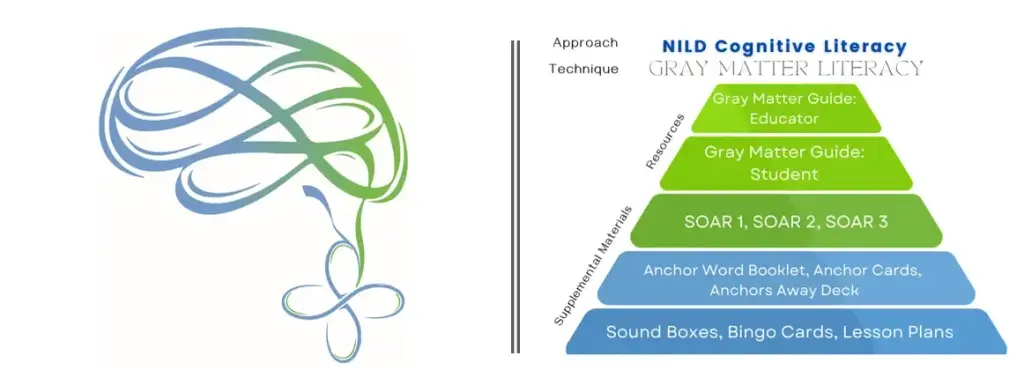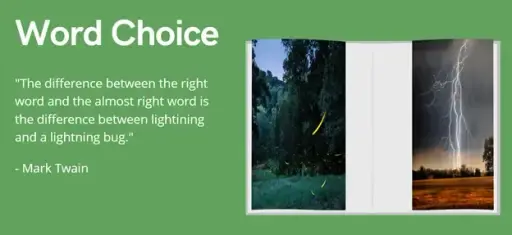
Written By: Kristin Barbour
January is an excellent month for us to highlight writing. Annually, National Handwriting Day is on January 23rd. My curiosity about why National Handwriting Day is observed on January 23rd led me to discover that the day was selected in honor of John Hancock (coinciding with his birthday). As a Founding Father of our nation, he was the first to sign the U.S. Declaration of Independence. John Hancock was known for his penmanship and famous signature. In fact, Hancock’s cursive autograph became so renowned that we commonly use “John Hancock” as another term for signature.
As I reflect on the writers of the American Constitution and other governing documents, I realize that they were thought generators and innovators. These writers established the foundation of this nation through multiple drafts of the U.S. Declaration of Independence, the Constitution, and the Bill of Rights, and all were done in cursive writing. Although writing is embedded in our nation’s history, writing ability is not just a skill needed in the past. The need for this ability to write well spans across time, past-present-and future. Let me share a few noteworthy aspects of writing that are presently being highlighted and delve into future implications of technology and writing.
Learning scientists continue their research exploring the link between the brain and writing. Writing is a complex cognitive ability that requires working memory, executive function, and self-regulation (Berninger, 2012). One component of writing, the physical act of handwriting, stimulates many geographical regions of the brain responsible for thinking, language, and working memory (James, 2012).Handwriting is defined as using the hand to construct units of written language symbols, including single letters, words, sentences, and connected text to express ideas and thinking (Berninger, 2012). Cursive handwriting uses connecting strokes to link the letters within a word which involves the coordination of motor planning, visual perception, and attention (Mangen & Velay, 2010).
 Current research suggests that the coordination of visual perception and motor planning movement with the physical sensation of finger and hand movements during cursive writing strengthens neural connections (Mangen & Velay, 2010). Specifically, the neural circuitry developed through learning cursive handwriting influences reading ability in the areas of letter and word recognition, comprehension, and spelling (Klemm, 2013). Handwriting is crucial in setting up brain systems to develop reading skills (Dinehart, 2014).
Current research suggests that the coordination of visual perception and motor planning movement with the physical sensation of finger and hand movements during cursive writing strengthens neural connections (Mangen & Velay, 2010). Specifically, the neural circuitry developed through learning cursive handwriting influences reading ability in the areas of letter and word recognition, comprehension, and spelling (Klemm, 2013). Handwriting is crucial in setting up brain systems to develop reading skills (Dinehart, 2014).
Hang in here with me a bit longer as we dig into the science of writing. Let’s take a moment to consider encoding. Encoding is breaking a spoken word into its individual sounds in the act of spelling and writing. In the complex orchestration of encoding, the brain is tying muscle movement and tactile kinetic letter formation with hearing a sound and associating the sound with its letter name. Stated in simpler terms, writing influences reading ~ you can’t separate the different strands of language!
So, the science of writing informs us that reading and the physical act of writing, and the cognitive processes involved in creating written expression are intimately connected. Margie Gillis, a nationally recognized literacy expert, indicates that encoding and decoding are reciprocal and bootstrap each other (Heubeck, 2023). She argues that encoding cannot be an afterthought in literacy instruction that heavily focuses on decoding. How do these neuroscientific findings impact our NILD work with students? In thinking about my NILD students, many need help with decoding skills and are weak spellers and writers. The science of writing research reminds me not to overly focus on reading over writing.

We must continue emphasizing encoding and writing within the Gray Matter Literacy technique and other NILD techniques such as Buzzer, Grammar, and Dictation and Copy. Integrating writing with reading is both efficient and effective. Coming full circle back to the science of writing, literary research expert Timothy Shanahan states, “There is no question that reading and writing share a lot of [cognitive] real estate; they depend on a lot of the same knowledge and skills.” (January 17, 2023). But let’s be honest with each other; teaching students writing is hard and takes time. Our educational therapy sessions are already so full! However, writing is essential for all students to learn as it is a primary mode of communication beyond speech.
Like reading, foundational writing skills need to be taught systematically and explicitly. Foundational writing skills, including handwriting and spelling, can be taught explicitly and systematically through NILD’s Rhythmic Writing and Gray Matter Literacy techniques. In addition, we incorporate other foundational writing skills such as text structure, vocabulary, orthographic mapping, and world knowledge in our educational therapy sessions using many other NILD techniques, including Dictation and Copy, Buzzer, and Memory Cards, to name just a few. Allowing students to write about what they learned (e.g., a Dictation and Copy homework extension activity) can help them to make sense of it. Be sure students spend time organizing their thoughts and selecting the right word choices and the type of writing conventions they will use to convey their ideas.

Incorporating writing in Math Block is a great way to help improve students' mathematical learning. For example, engage students in error analysis by giving students mathematical problems that have already been solved. Students identify the mathematical error and, if appropriate, provide several different ways to solve the problem. Writing about what error occurred and how to fix it builds their analysis and argumentative writing skills. Lower-level mathematical writing activities can include summarizing and explaining how to solve a word problem or a numerical progression.
We know that writing matters even in the earliest grades when students learn to read. We also know that writing is a cognitively complex task requiring significant investments of students' cognitive resources; hence students should be guided in constructing sentences and paragraphs. However, what if current and future technology can help students write sentences and compose essays? Recent educational media headline coverage about writing focuses on technology and writing, specifically software writing apps. The newest artificial intelligence apps and software that can be used for writing have implications for the present and future. Artificial intelligence (AI)-powered tools like ChatGPT are trending now and have the potential to affect K-12 students. ChatGPT is a new AI chatbot that can write about all subjects in various writing styles (Hess, 2023).
The capabilities of AI-powered tools to influence students' writing will continue to capture educators' and students' attention for years to come. Critics concerned with the use of AI-powered tools indicate that the software is very good at putting words into an order that makes sense but understanding the meaning or knowing whether the statements it makes are correct is yet to be a capability of the tool. In essence, the sentences look like they might be good, and the answers are very easy to produce as the chatbot can write an article on any topic efficiently, but not necessarily accurately or meaningfully) within mere seconds. Overuse of AI-powered tools may mean that students do not have the opportunity to learn how to write correctly. Also, students need to determine if the AI-generated plausible-sounding sentences are correct or incorrect or nonsensical answers.
Supporters of AI-powered tools argue for incorporating them into teaching and learning, such as providing students suggestions for grammar, vocabulary, and sentence structure. Other ways to incorporate these tools include creating quizzes for self-check and writing samples to practice revisions (almost like an error analysis in math). Students could experiment with writing voice, adding evidence, analyzing, or reorganizing the structure. In the short time that AI-powered writing tools have been introduced into mainstream education, there have been various responses from students, educators, school leaders, and parents ranging from cheering to hand-wringing and philosophizing. The opportunity is ripe for us to encourage educators and administrators to bring writing back into the classroom where teachers can facilitate and observe students' writing process!
The recent findings about the science of writing combined with the national attention AI-powered writing tools are receiving have renewed my intentionality to help develop my NILD students’ writing skills. Rhythmic Writing builds the necessary skills needed for handwriting which is so important because of the multitude of benefits that comes with writing in cursive. All five NILD core techniques lend themselves to intentionally building writing skills - including Math Block! I am also very excited that NILD is in the process of developing a new Rx for Discovery Spelling workshop. The new spelling workshop combined with Rx for Discovery Writing Fundamentals and Standard workshops are great ways to gain new insights into developing your students’ writing abilities.

Kristin Barbour, Ed.D. PCET
References
Berninger, V. W. (2012). Strengthening the Mind's Eye. Principal, 91(5), 28-31. Retrieved from http://eds.b.ebscohost.com.proxy1.library.jhu.edu/ehost/pdfviewer/pdfviewer?vid=1&sid=57bb6336-d477-40a7-8628-80963a024149%40sessionmgr103
Dinehart, L. H. (2015). Handwriting in early childhood education: Current research and future implications. Journal of Early Childhood Literacy, 15(1), 97-118. doi:10.1177/1468798414522825
Hess, R. (2023, January 26). Will ChatGPT unflip the classroom? EducationWeek. https://www.edweek.org/technology/opinion-will-chatgpt-unflip-the-classroom/2023/01?utm_source=nl&utm_medium=eml&utm_campaign=eu&M=6055996&UUID=dda74d04211477c311c86b440e0a00de&T=8149445
Heubeck, E. (2023, January 17). ‘Encoding explained: What it is and why it’s essential to literacy. EducationWeek. https://www.edweek.org/teaching-learning/encoding-explained-what-it-is-and-why-its-essential-to-literacy/2023/01
James, K.H. “How Printing Practice Affects Letter Perception: An Educational Cognitive Neuroscience Perspective.” Presented at Handwriting in the 21st Century?: An Educational Summit, Washington, D.C., January 23, 2012.
Klemm, W. R. (2013). Why writing by hand could make you smarter. Psychology Today. Retrieved from https://www.psychologytoday.com/blog/memory-medic/201303/why-writing-hand-could-make-you-smarter
Mangen, A., & Velay, J. L. (2010). Digitizing Literacy: Reflections on the Haptics of Writing. In Advances in Haptics. InTech, 385-401. Retrieved from https://cdn.intechopen.com/pdfs/9927/inTechDigitizing_literacy_reflections_on_the_haptics_of_writing.pdf
Sawchuk, S. (2023, January 17). How does writing fit into the ‘science of reading’? EducationWeek. https://www.edweek.org/teaching-learning/how-does-writing-fit-into-the-science-of-reading/2023/01